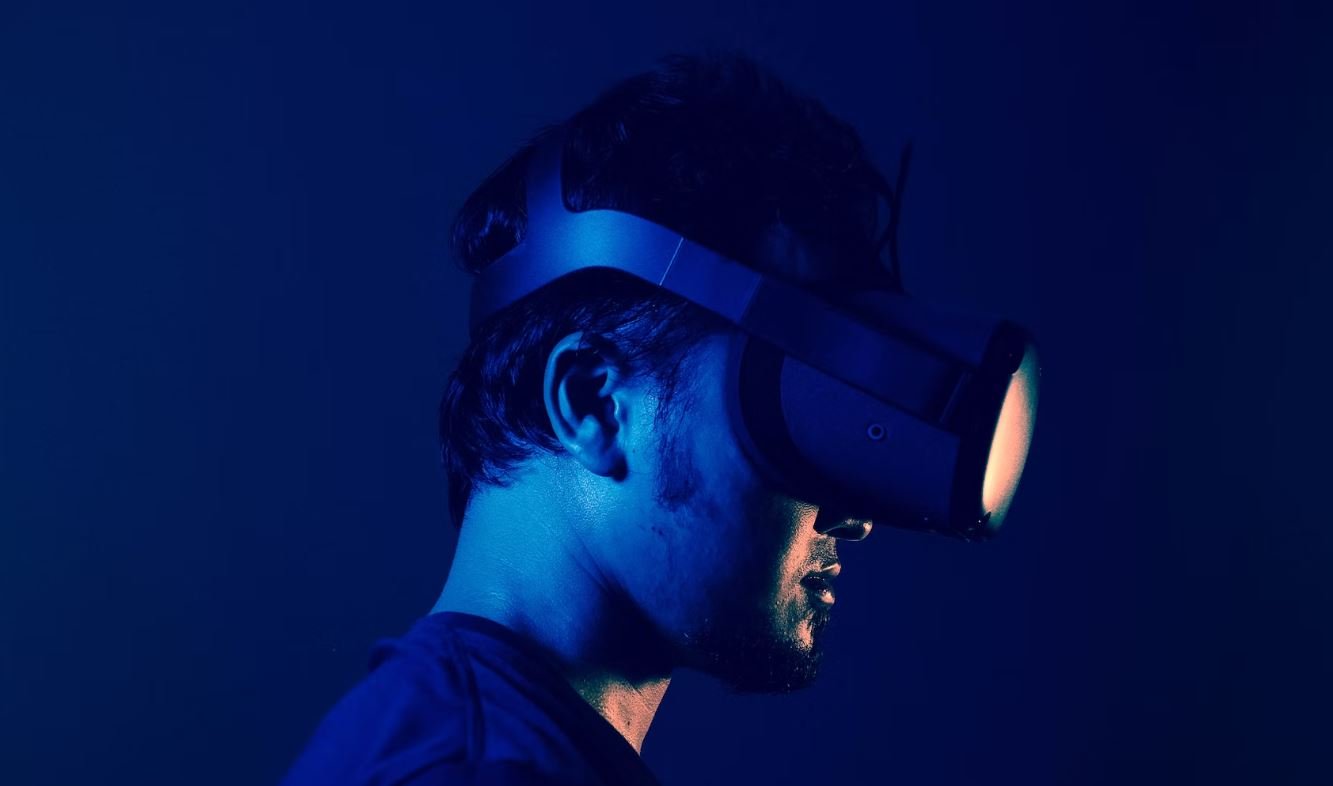How Far Is AI Developed?
The development of artificial intelligence (AI) has revolutionized many industries and continues to shape our everyday lives. While AI has made significant strides, it is still an evolving field with much untapped potential. In this article, we will explore the current state of AI development and provide insights into its possibilities.
Key Takeaways
- AI has made significant progress, but still has room for growth.
- Machine learning and deep learning are driving advancements in AI.
- AI has diverse applications in various fields, including healthcare, finance, and entertainment.
- Ethical concerns and regulations play a crucial role in AI development.
**Artificial intelligence** is a branch of computer science that aims to create intelligent machines capable of performing tasks that typically require human intelligence. *AI technology has the potential to automate and improve various processes, opening up opportunities for innovation and efficiency. From autonomous vehicles to personalized digital assistants, AI is already transforming our lives in numerous ways.*
Advancements and Applications
**Machine learning** and **deep learning** are two key areas that contribute to the development of AI. Machine learning focuses on enabling algorithms to learn patterns and make predictions or decisions based on data, while deep learning involves training neural networks with multiple layers to process complex information. *These technologies have significantly advanced natural language processing, image recognition, and predictive analytics, leading to breakthroughs in areas such as healthcare diagnostics, stock market predictions, and voice-activated virtual assistants.*
The applications of AI are extensive and span across various industries. Here are some notable examples:
- **Healthcare**: AI is being used to enhance diagnostics, drug discovery, personalized medicine, and patient monitoring. It can analyze medical images, recommend treatment plans, and support clinical decision-making.
- **Finance**: AI is employed for fraud detection, algorithmic trading, credit scoring, and risk assessment. It can analyze large volumes of data and identify patterns that help make informed financial decisions.
- **Entertainment**: AI enhances user experiences in video games, online streaming services, and virtual reality. It enables realistic simulations, adaptive gameplay, and personalized content recommendations.
Ethical Considerations and Regulations
As AI technology advances, it raises important ethical concerns. The potential impact on privacy, security, and employment is a topic of debate. *Many experts also worry about biased algorithms perpetuating discrimination, as well as the potential for AI to be misused in areas like warfare or surveillance.* To address these concerns, regulatory frameworks are being developed to ensure responsible AI development and deployment.
**Governments and organizations** are working towards establishing guidelines for AI technologies. Regulatory measures include transparency and explainability requirements, data privacy regulations, and safeguards against bias and discrimination. *By promoting ethical best practices, these regulations aim to create a trustworthy and accountable AI ecosystem.*
The Future of AI
The future of AI holds immense potential, limited only by our imaginations and ethical boundaries. It is difficult to predict with certainty the full extent of AI’s development, as the field is constantly evolving. However, experts believe that **AI will continue to shape industries, transform jobs, and improve everyday life**. From advancements in robotics and natural language processing to the enhancement of human-machine collaboration, AI will continue its journey towards greater intelligence and capabilities.
| Decade | Key Milestones |
|---|---|
| 1950s | Foundations of AI laid with early computing experiments and theories. |
| 1990s | Machine learning algorithms and neural networks gain prominence. |
| 2000s | Advancements in data availability and computing power accelerate AI research. |
| 2010s | Breakthroughs in deep learning and AI applications in various fields. |
*AI has come a long way since its inception in the 1950s, evolving steadily with significant breakthroughs in recent decades.* The rapid progress in processing power, data availability, and algorithmic advancements has propelled AI to new heights.
Challenges and Opportunities
While AI has made remarkable strides, it faces challenges that require ongoing research and innovative solutions. Some key challenges include:
- **Data Quality and Bias**: AI algorithms heavily rely on data, and the quality and representativeness of data can introduce biases. Recognizing and mitigating these biases is crucial for fair and accurate AI outcomes.
- **Ethical and Legal Frameworks**: Developing responsible AI practices and establishing ethical guidelines and regulations are crucial to address potential risks and ensure accountability.
- **Human-Machine Collaboration**: Striking the right balance between human expertise and AI capabilities is essential for effective collaboration and utilization of AI technology.
| Industry | AI Impact |
|---|---|
| Healthcare | Enhanced diagnostics and personalized medicine. |
| Finance | Fraud detection and algorithmic trading. |
| Transportation | Autonomous vehicles and optimized logistics. |
*These challenges present opportunities for researchers, developers, and policymakers to collaborate in creating a sustainable AI ecosystem that benefits society as a whole. By addressing the challenges, we can unlock AI’s potential and ensure it serves humanity’s best interests.*
Conclusion
AI has come a long way, but its journey is far from over. The development of artificial intelligence has already made a significant impact in various industries and aspects of our lives, and it continues to advance rapidly. AI technologies such as machine learning and deep learning, along with their diverse applications, show immense promise for the future. As we move forward, it is crucial to prioritize ethical considerations, establish regulatory frameworks, and foster collaboration to maximize the benefits of AI and address any potential risks. The potential of AI is vast, and it is up to us to shape its development and ensure a prosperous future. With ongoing research and innovation, AI will continue to push boundaries and redefine what is possible.

Common Misconceptions
Misconception 1: AI is already as advanced as depicted in science fiction
One common misconception about AI is that it has already reached the level of sophistication and capability portrayed in science fiction movies and books. However, the reality is that AI is still far from achieving true human-level intelligence.
- AI systems today are more specialized and narrow in their capabilities.
- Most AI applications are focused on solving specific problems rather than emulating human-consciousness.
- AI still struggles with complex and abstract tasks that humans perform effortlessly.
Misconception 2: AI will eliminate jobs and lead to mass unemployment
Another common misconception is the fear that AI will inevitably replace humans in the workforce, leading to widespread unemployment and economic disruption. While AI does have the potential to automate certain tasks, it is not necessarily a threat to all jobs.
- AI is more likely to augment human capabilities and enable us to perform our jobs more efficiently.
- New jobs and industries are expected to emerge as a result of advances in AI technology.
- AI is better suited for repetitive and mundane tasks, freeing up humans to focus on more creative and complex work.
Misconception 3: AI is infallible and objective
There is a common belief that AI is completely neutral and objective in its decision-making, devoid of bias or prejudice. However, AI systems are created by humans and can inherit their biases and limitations.
- AI algorithms are trained on datasets that may have inherent biases, leading to biased outcomes.
- AI systems can amplify or perpetuate existing societal biases if not carefully designed and supervised.
- AI lacks contextual understanding and can make flawed judgments depending on the input and training data.
Misconception 4: AI is a magical solution to all problems
Some people have an exaggerated belief in the capabilities of AI, thinking it can solve any problem and provide instant solutions. However, AI is not a magical solution and has its limitations.
- AI requires vast amounts of high-quality data to train and perform effectively.
- AI cannot replace human intuition, creativity, and emotional intelligence in complex decision-making.
- AI is only as good as its algorithms and training data, and can produce inaccurate or unreliable results if not carefully developed and tested.
Misconception 5: AI is a distant future technology
Contrary to popular belief, AI is not a technology that is only relevant in the distant future. It is already present in many aspects of our lives, even though we may not always be aware of it.
- AI is used in recommendation systems, spam filters, and voice assistants that we encounter in our daily lives.
- Businesses across various industries are leveraging AI to improve efficiency and customer experience.
- AI technologies such as machine learning and natural language processing are actively being researched and developed.

The History of AI
AI has a long and fascinating history, with significant milestones and breakthroughs. The table below highlights some key moments in the development of AI:
| Year | Event |
|---|---|
| 1950 | Alan Turing proposes the “imitation game” test to evaluate a machine’s intelligence. |
| 1956 | John McCarthy coines the term “artificial intelligence” and organizes the Dartmouth Conference. |
| 1997 | IBM’s Deep Blue defeats world chess champion Garry Kasparov. |
| 2011 | IBM’s Watson wins Jeopardy! against human opponents. |
The AI Revolution in Industries
AI has revolutionized numerous industries, impacting everything from healthcare to finance. Here are some examples:
| Industry | Examples of AI Applications |
|---|---|
| Healthcare | Automated diagnostics, virtual nursing assistants, precision medicine. |
| Finance | Algorithmic trading, fraud detection, personalized financial advice. |
| Transportation | Self-driving cars, traffic optimization, predictive maintenance. |
Top AI-Powered Devices
AI has found its way into various consumer devices, enhancing their functionality and user experience:
| Device | AI Features |
|---|---|
| Smartphone | Virtual assistants, facial recognition, voice commands. |
| Smart Speakers | Natural language processing, smart home integration, music recommendations. |
| Smart TVs | Content recommendations, voice-controlled navigation, intelligent upscaling. |
AI’s Impact on Job Market
The rise of AI has led to significant transformations in the job market, with certain occupations being affected more than others:
| Occupation | AI Impact |
|---|---|
| Customer Service Representative | Automated customer support systems can handle basic inquiries, reducing the need for human representatives. |
| Delivery Driver | Autonomous vehicles and drones are threatening traditional delivery jobs. |
| Software Developer | AI is increasingly used to automate code generation and detect potential bugs. |
AI in Pop Culture
AI has captivated our imagination and inspired many works of popular culture. Here are some notable references:
| Movie/TV Show | AI Character | Portrayed By |
|---|---|---|
| The Matrix | Agent Smith | Hugo Weaving |
| Avengers: Age of Ultron | Ultron | James Spader |
| Ex Machina | Ava | Alicia Vikander |
The Dark Side of AI
While AI has incredible potential, there are also concerns and ethical considerations surrounding its development:
| Issue | Impact |
|---|---|
| Privacy | AI-powered surveillance systems raise concerns about privacy invasion. |
| Job Displacement | Automation may lead to significant job losses and economic inequality. |
| Biased Algorithms | AI systems can perpetuate biases if trained on biased datasets. |
The Future Possibilities
AI’s development continues to push boundaries, with exciting possibilities on the horizon:
| Possibility | Description |
|---|---|
| Artificial General Intelligence (AGI) | Creating AI systems capable of understanding, learning, and performing any intellectual task at or beyond human levels. |
| Sentient Robots | Building robots with consciousness and self-awareness. |
| AI Assistants for Everything | Having AI-powered personal assistants that handle various aspects of our daily lives. |
The State of AI Research
AI research is booming, with scientists and engineers constantly pushing AI’s capabilities:
| Research Area | Recent Developments |
|---|---|
| Natural Language Processing | Advancements in language models like GPT-3 have revolutionized text generation and understanding. |
| Computer Vision | Deep learning algorithms now achieve human-level performance on various visual recognition tasks. |
| Robotics | Emerging robotics technologies are enabling more sophisticated and dexterous robotic systems. |
AI has undeniably come a long way since its inception, and its impact on various aspects of society is significant. From its historical milestones to its influence in pop culture, AI’s continuous development brings both excitement and concerns about its implications. As further research and advancements occur, it is crucial to navigate the evolving landscape of AI with careful consideration of its impact on industries, the job market, personal privacy, and potential bias. The possibilities for AI’s future are vast, holding tremendous potential for both positive and negative outcomes. It is up to us to responsibly shape its trajectory.
Frequently Asked Questions
Is AI already developed enough to replace human jobs?
AI has made significant advancements in recent years, but it is not yet developed enough to completely replace human jobs. While AI technology has the potential to automate certain tasks, there are still many areas that require human expertise, creativity, and decision-making abilities that AI currently cannot replicate.
Can AI understand and interpret human emotions accurately?
AI has made progress in recognizing and responding to human emotions, but it is still a challenging task. Although AI algorithms can analyze facial expressions, speech patterns, and other cues, accurately interpreting complex human emotions remains a complex problem. The development of AI that fully understands and interprets human emotions is an ongoing research area.
Are self-driving cars a result of AI advancements?
Yes, self-driving cars are an outcome of AI advancements. AI plays a critical role in enabling these vehicles to perceive their surroundings, make decisions, and safely navigate through traffic. However, the technology behind self-driving cars is still being refined, and further advancements are necessary before they become widely available.
How does AI contribute to medical diagnostics and treatment?
AI has the potential to revolutionize medical diagnostics and treatment. It can analyze vast amounts of data and provide valuable insights for doctors to make accurate diagnoses and develop personalized treatment plans. AI can also assist in identifying trends, predicting outcomes, and suggesting treatment options, leading to improved patient care and outcomes.
What limitations does AI face currently?
Despite significant progress, AI still faces certain limitations. One major limitation is the lack of common sense reasoning and understanding of context, which can lead to errors in interpreting information. Additionally, ethical concerns, biases within datasets, and the potential impact on employment are significant challenges that need to be addressed as AI continues to develop.
How far is AI in understanding and generating natural language?
AI has made substantial advancements in natural language understanding and generation, evidenced by the rise of virtual assistants like Siri and Alexa. Natural language processing techniques enable AI systems to understand human languages, respond to queries, and even generate coherent text. However, true human-like understanding and generation of natural language remains an ongoing research pursuit.
Can AI learn to be creative and innovative?
AI has shown promising capabilities in generating creative content, such as music, art, and literature. Through the use of machine learning algorithms, AI systems can analyze patterns, trends, and examples to produce original works. While AI can mimic creative processes, the ability to truly possess human-like creativity and innovation is still an area of active investigation.
How does AI impact the cybersecurity landscape?
AI has a significant impact on the cybersecurity landscape. It can enhance threat detection capabilities, identify unusual patterns that may indicate an attack, and assist in real-time response and mitigation. However, the same AI techniques can also be employed by malicious actors, creating a constant cat-and-mouse game between AI-based security measures and malicious AI tools.
Is AI a threat to humanity?
There are ongoing debates and discussions about the potential risks AI may pose to humanity. While AI has the power to transform industries and improve our lives, there are concerns regarding job displacement, privacy, biases, and the potential for AI systems to act beyond their intended scope. Ensuring ethical guidelines, regulations, and responsible development practices are crucial in mitigating these threats.
What does the future hold for AI development?
The future holds great promise for AI development. We can expect advancements in areas such as robotics, healthcare, transportation, and finance. As AI becomes more integrated into our daily lives, collaboration between humans and AI systems will likely become more common, with AI serving as a powerful partner in augmenting human capabilities and solving complex problems.




